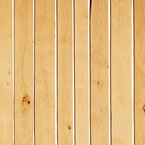
Wood products manufacturers and industry suppliers offer up their favorites for domestic and exotic species.
Picking a favorite wood is no simple task. This year’s favorites list includes beloved domestics along with a smattering of exotics including Hawaiian koa, considered by many to be an exotic domestic.
 Abundant Red Alder
Abundant Red Alder
Stephanie Happer, Northwest Hardwoods marketing manager, selected red alder as a personal favorite. “An abundant and sustainable western hardwood, alder is both unique and versatile. Its honey-brown color and fine grain give it a distinctive look. There is little variation between its heart and sapwood, so it has a pleasing, uniform appearance. These very same qualities allow the woodworker ample flexibility with stain and other finishes.”
Alder’s physical properties offer added benefits with regards to machining, she added. “Consistent, custom grades and affordable pricing also add to alder’s appeal.” With regard to sustainability, alder also regenerates prolifically and is readily available as PEFC-certified lumber.
 Figured Avodire: a Fan Favorite
Figured Avodire: a Fan Favorite
Asked to name his favorite, Ben Clift, part owner Renaissance Specialty Veneer Products Inc., took some time to narrow it down to avodire. “Figured quarters stand out as my favorite,” he said.
“Avodire is a light yellowish tan colored wood with some logs yielding grain patterns that appear almost three-dimensional. These highly figured logs are beautiful and prized for architectural panels and custom furniture projects.” Clift added, “I personally like the broken type figure, which is common in avodire quarters, and when finished properly this golden veneer appears to twist and turn.”
Clift said avodire is a good choice for larger projects because of the large log size and consistency within the species. “If you are considering avodire it is important to note that occasionally the veneer can develop a bluish grey hue that can come and go within a sliced log. Avodire is a good alternative when considering other lighter colored species like anigre, movingue, satinwood and/or curupixa.”
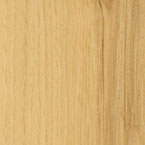 Hickory: Wood’s Mockingbird
Hickory: Wood’s Mockingbird
“I love wood -- all species of wood,” said Ang Schramm, director of Technical Services for Columbia Forest Products. “It warms our hearts, it soothes our souls. It makes us comfortable and protects us from the elements. It is beautiful.
“Of all the features that contribute to its beauty, the natural character inherent in wood gives each species its own individual personality. Grain, color, inclusions such as knots, burls, figure, bird peck, worm track and other unique attributes also offer the erudite observer ample evidence of the given species’ identification,” he said.
“Hickory presents all these,” Schramm added. “It is the mockingbird of wood with sapwood that resembles ash, heartwood that looks like white oak and pecky wood that looks like elm or even chestnut. It has a rich, satin luster. It is available in a calico look with alternating heart and sapwood, a rustic look with all the natural characteristics uniformly distributed, all heart, all sap, and natural with a mix of all. It makes for beautiful cabinetry, breathtaking flooring, and handsome millwork.”
Readily available, hickory also is cost friendly, easy to machine, and has excellent physical properties.
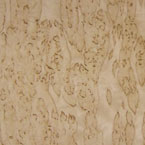 Cherry: A Perennial Favorite
Cherry: A Perennial Favorite
Cherry won the top vote from a number of respondents, including Douglas Grove, owner of Groff and Groff Lumber.
Grove has a fond spot for figured cherry, which he calls an under-rated wood. “It is a very pretty wood, but I’m not seeing it getting the respect or love it should. Figured cherry has a wide number of applications including paneling, flooring and furniture. Nothing looks as good as figured cherry in a kitchen, to my mind,” he said.
Pete Terbovich, manager at Horizon Wood Products, is another fan of cherry. “Our company is located near the Allegheny National Forest. We produce a lot of cherry and see all variations of the wood,” he said. And although cherry’s popularity has slipped in the past five years, he noted, “it remains one of the top choices for fine furniture.”
Norman S. Fay, owner of Fay’s Cabinetry Inc., selected his favorite wood from a unique perspective. “As a designer/salesman of custom cabinetry, my favorite woods are those that present the best finish. I like maple for solid color painted finishes, as this hardwood takes paint nicely and on cabinetry provides a smooth and even finish. For stained, antiqued and patinaed finishes, I’m partial to cherry, as this hardwood has lovely grain character, and stained finishes on cherry have a depth and luster not found on most other cabinetry woods,” Fay said.
 Pine Loved for Its Heart
Pine Loved for Its Heart
Anthony Becker, general manager at Keystone Vintage Lumber, said it was tough narrowing the choice to one favorite, but Southern yellow pine or heart pine is a standout to him. “I love everything about the old-growth heart pine. It is like a slice of history to see it. It has luster, romance, a pleasing color —it is a truly beautiful wood,” he said.
“Heart pine is a strong wood and it even smells good. The old-growth wood compared with contemporary grown yellow pine is very different. The old-growth wood has tight growth rings and is much more dense. Heart pine trees grew slowly into very large trees. It is amazing to think how plentiful the heart pine trees used to be,” Becker added.
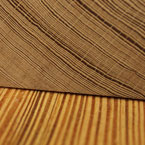 Karelian Birch Part of a Winning Trifecta
Karelian Birch Part of a Winning Trifecta
Jim Dumas, owner of Certainly Wood, picked a trifecta of woods as his favorites: Karelian birch, koa and ziricote.
“Karelian birch, also known as Karelian burl, is a favorite because it is light, bright and different and doesn’t look like a normal wood grain pattern,” Dumas said. “Koa is another favorite because it is a warm wood with a luster that comes at you strong. Koa offers beautiful colors, dense sheen and is great to work.”
Ziricote, he added, is another favorite because it is dark and dramatic. “Ziricote is a great choice when you need a strong, masculine and dramatic ‘hit.’”
Dumas said all three woods can be like the little girl with a curl in the middle of her forehead. “When she was good, she was very, very good but when she — and the three woods — are bad, they can be pretty awful. Two-thirds of Karelian birch burl, koa and ziricote I’m not sure I would let in my house, but when these woods are ‘on,’ nothing can touch them,” he said.
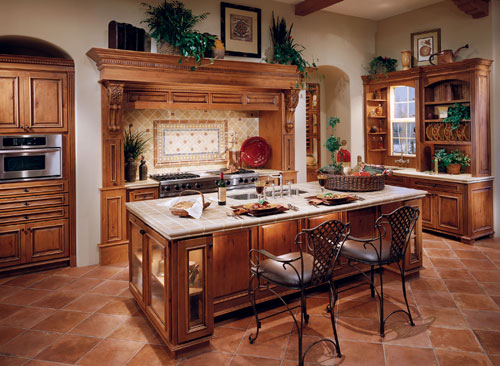 Colorful Koa
Colorful Koa
Along with Dumas, Brian Hearne, president, Hearne Hardwoods in Oxford, PA, is also a fan of colorful and rare koa.
“Of the 150 to 185 woods we carry, koa is the most colorful. It can go from gold to black in the same board. Every log has different color combinations, with gold, yellow, red, violet, brown, black streaks and more a possibility. That is the charm with koa,” said Hearne, “you just never know what a log will yield.”
Hearne said koa is one of the more expensive domestic species. “Basically, it only grows in Hawaii in what amounts to a very small part of the world. You have a resource that comes from an area the size of an average county in the U.S.”
 European Beech
European Beech
Pollmeier says European Beech ranks as the number one imported European hardwood. Naturally white, pale cream or pale brown, it is steamed to relieve drying stresses, which brings out a pinkish-red color. Easy to machine, nails and glues well and when sanded, stained and polished, it produces a smooth finish.
A number of manufacturers throughout the United States incorporate European beech in their products. Huntwood Industries, the largest cabinet manufacturer west of the Mississippi, describes European beech as a “versatile hardwood, displaying much of the durability of oak with a more subdued grain pattern (similar to maple but grainier) and a great choice for those who want a species between oak and maple.” A video makes the case for its versatility in applications such as furniture and other casegoods.
Jo-Ann Kaiser is a longtime writer for Wood & Wood Products and author of the popular Wood of the Month columns.






Have something to say? Share your thoughts with us in the comments below.